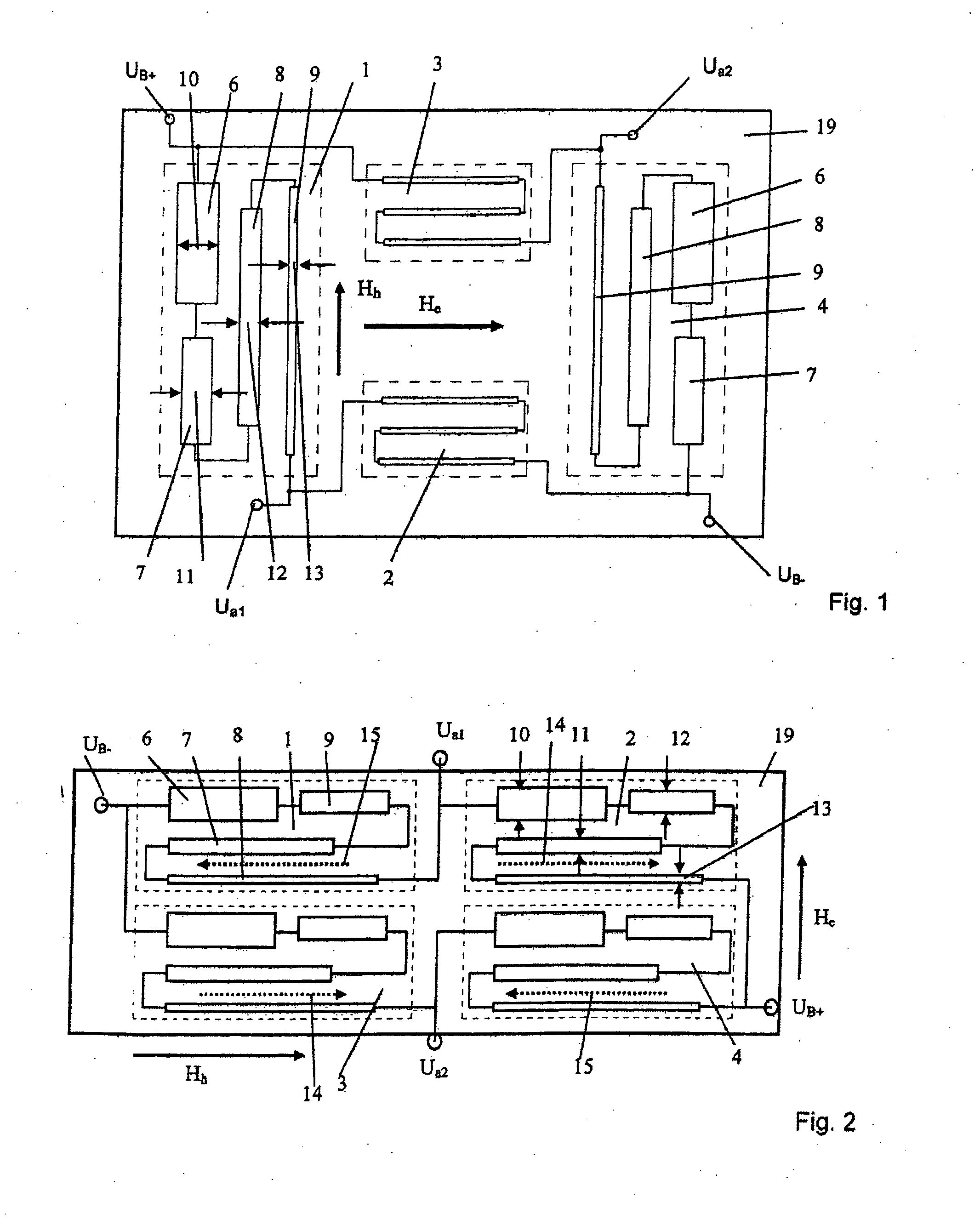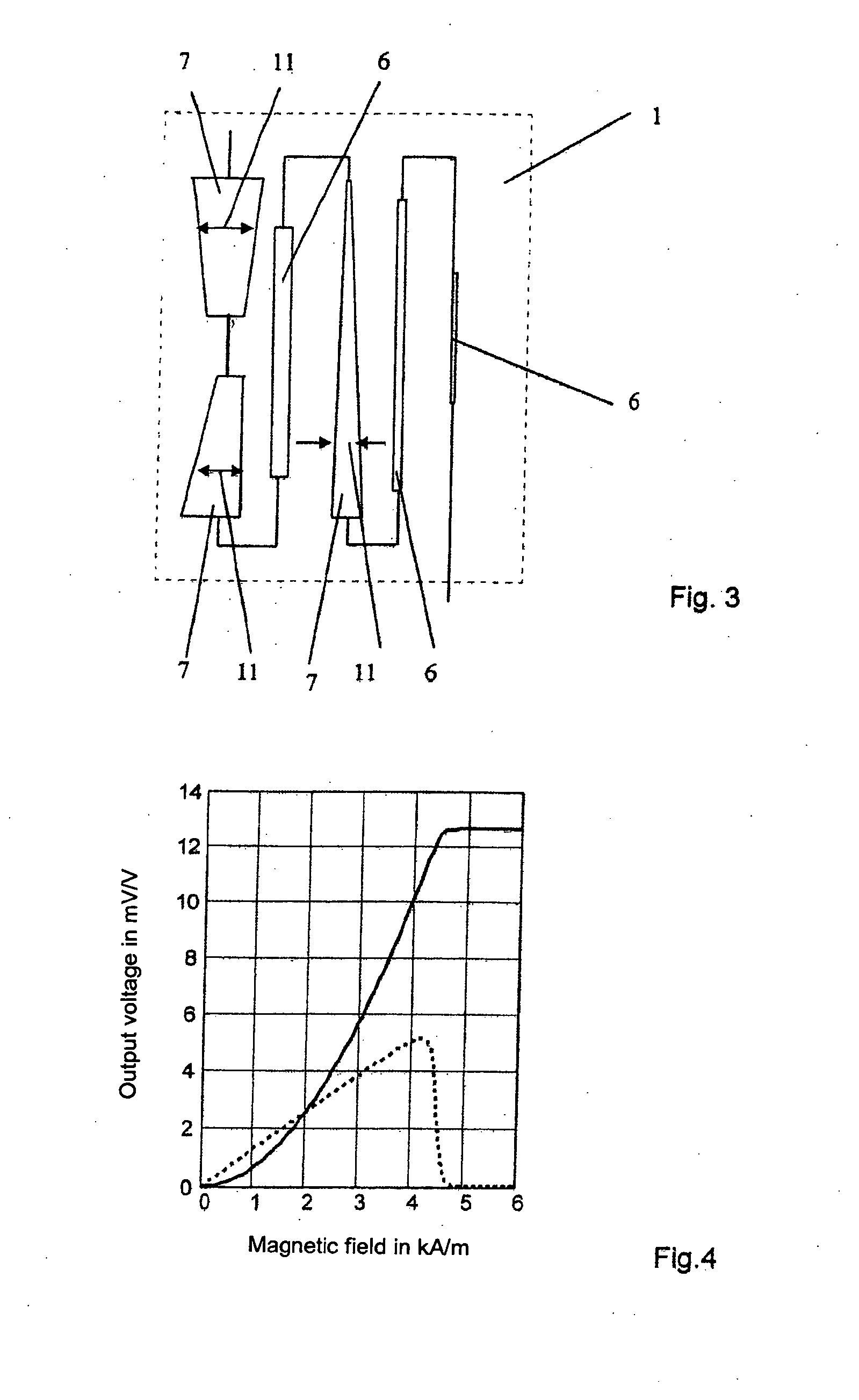Magneto-resistive sensor for measuring magnetic fields
a magnetic field and resistive sensor technology, applied in the direction of magnetic field magnitude/direction, measurement devices, instruments, etc., can solve the problems of disadvantageous reduction of the resistance value of the magneto-resistive strip to approximately one-third, insufficient linearity and temperature independence of the described circuit, etc., to achieve convenient rotation, double the sensor sensitivity, and easy rotation
- Summary
- Abstract
- Description
- Claims
- Application Information
AI Technical Summary
Benefits of technology
Problems solved by technology
Method used
Image
Examples
Embodiment Construction
[0028]FIG. 1 shows a magneto-resistive sensor bridge according to the invention with resistors 1; 2; 3; 4 constructed of AMR layer strips and disposed on a substrate 19. The resistors 1; 2; 3; and 4 are each enclosed by dashed lines. The operating voltage is applied to the bridge between the terminals UB+ and UB−. The output signal of the bridge is measured as a voltage difference between Ua2 and Ua1. The resistors 1 and 4, which are diagonally opposed in the electric circuit of the bridge (see FIG. 8) each include four AMR layer strips 6; 7; 8; 9. These AMR layer strips 6; 7; 8; 9 have parallel longitudinal strip directions, different shape anisotropies and different lengths and are in the depicted diagram arranged mirror-symmetric to the two resistors 1 and 4. The different shape anisotropy of the AMR layer strips 6; 7; 8; 9 is adjusted in FIG. 1 by selecting different widths 10; 11; 12; 13. Because the AMR layer strips 6; 7; 8; and 9 designated with the same reference symbol have...
PUM
 Login to View More
Login to View More Abstract
Description
Claims
Application Information
 Login to View More
Login to View More - R&D
- Intellectual Property
- Life Sciences
- Materials
- Tech Scout
- Unparalleled Data Quality
- Higher Quality Content
- 60% Fewer Hallucinations
Browse by: Latest US Patents, China's latest patents, Technical Efficacy Thesaurus, Application Domain, Technology Topic, Popular Technical Reports.
© 2025 PatSnap. All rights reserved.Legal|Privacy policy|Modern Slavery Act Transparency Statement|Sitemap|About US| Contact US: help@patsnap.com



